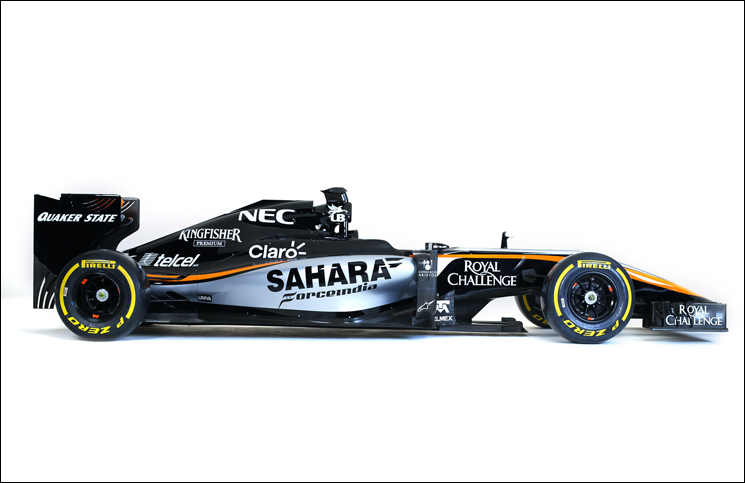
The Force India VJM08 made its long overdue track debut at the final pre season F1 test, held at Barcelona. The car had been delayed for a number of issues mainly thought to relate to late or non payment of bills to technical suppliers. Rumours of no fuel tank, chassis, crash structures and electronics did the rounds, and allied to the legal wranglings of the team ownership some began to wonder if the VJM08 would ever materialise.
A launch took place but the car unveiled was what is know in the industry as a ‘Bitsa’ (Bits of this, bits of that said in an Essex, England accent), using a 2014 chassis, 2013 rear wing and a modified 2014 nose.
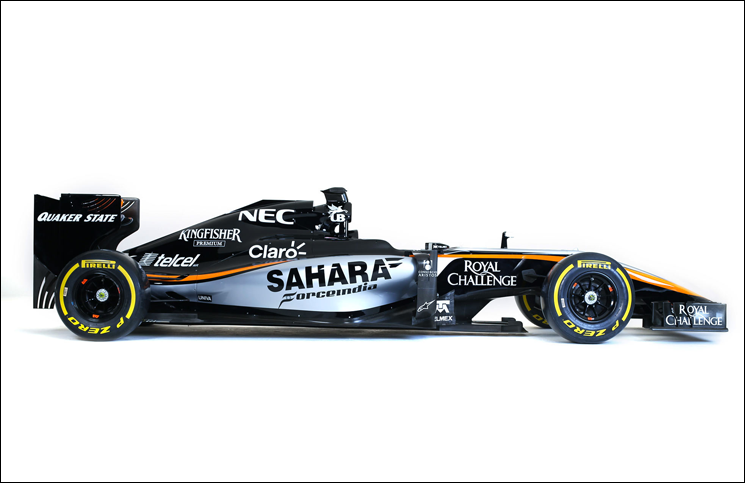
“The challenges we had to face were very different compared to 2014. Obviously, last year we had a completely new power unit and technical regulations so there was a huge amount of work going into just getting the car to the first race” Andrew Green, Force India Technical Director explains. “This year, our focus is mostly on refining and developing the package we had in 2014. We are looking forward to building on what we learnt in 2014 about the VJM07: we understood the car’s strengths and weaknesses and we aim to build on the former and fix the latter. This has been the goal for building the VJM08.”
The reasons for the delay are not clear and the team has yet to be forthcoming about the rumours, but it is clear that with a car on track that at least for now the reported financial woes are not at the top of the agenda anymore. One of the rumoured financial issues related to the state of the art wind tunnels at TMG in Cologne, Toyota has not commented on the issue but media reports that access to the wind tunnel is restricted have been widespread. The VJM08 is the first Force India developed at a larger scale. “Working solely in the TMG wind tunnel will help our development significantly: having the ability to run 60% models will represent a significant step forward in fidelity of the data we receive and will in turn improve our correlation between the wind tunnel results and the on-track car data. The model itself has a significant increase in aerodynamic loading and it’s a challenge designing and building a new model in a very short time frame” Green continues. “The tunnel, however, is not the only course we are taking to improve our performance. We are also looking to step up our simulator programme in order to deliver a ‘state of the art’ tool that will help us develop more in the virtual world and allow us to explore new directions and developments. The combination of the new wind tunnel and simulator will also be aided by the ramping up of our CFD capabilities; we are now operating with 30 teraflops of computing power – a massive change compared to the 0.3 teraflops we had five years ago. We expect the fruits of this investment to start feeding into the development of the car throughout the 2015 season and beyond.”
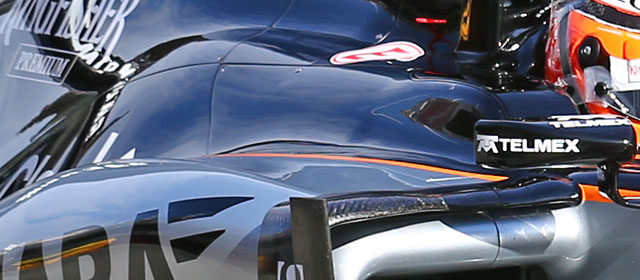
In overall design terms the VJM08 is seemingly a continuation of the VJM07 concept, but one that features a number of detail improvements. Immediately apparent is the bulge on the engine cover (above), present on all Mercedes powered cars it houses the much larger plenum on the V6 engine, it is larger due to the use of variable inlet trumpets.
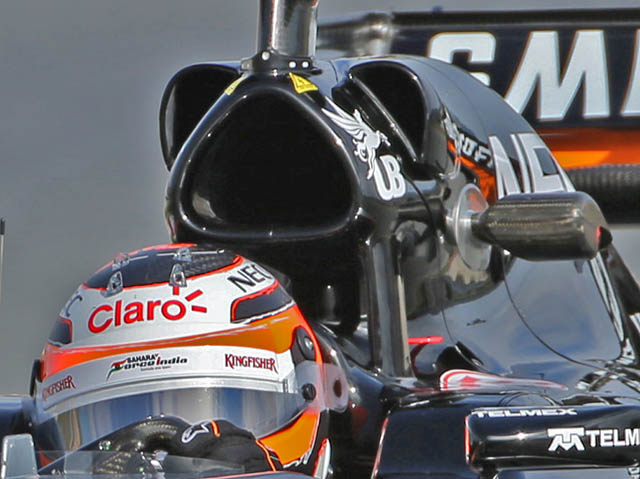
The VJM08 has adopted cooling ‘ears’ on the roll hoop (above) in place of the secondary duct seen on the VJM07 (below). These ducts cool components mounted at the rear of the V6 engine including but not limited to, the transmission. Comparing the overall roll hoop shape and combustion air intake the shape is very similar
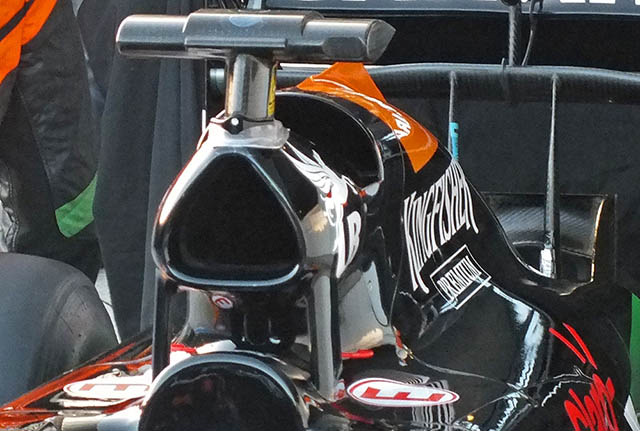
At the front of the car the much lower nose is apparent. The VJM08 has adopted a longer gradient on the upper surface of the nose, in the style of the Manor MNR1, something that can reduce space for components at the front of the chassis.

Also immediately apparent is the use of a Red Bull style ducted nose, with a very large vent on the top of the nose, much larger than those seen on the Red Bull. The corresponding duct under the nose is mounted between the two under nose turning vanes.
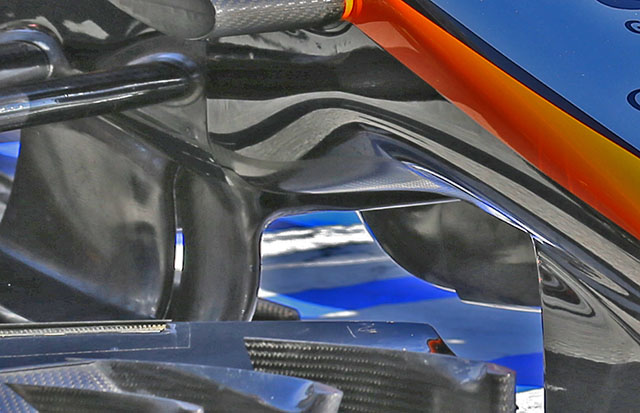
The front suspension of the VJM08 takes the blended lower wishbone seen on the 2014 & 2015 Mercedes designs to a new level, a vey large solid section is the result. This is done to tune the airflow around the front wheel.
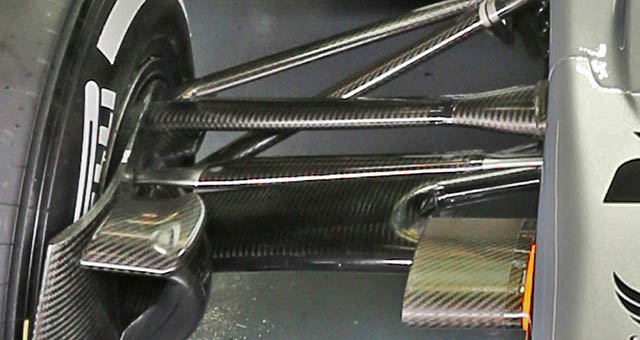
Beyond the wishbone shape the suspension on the VJM08 looks conventional externally with a pushrod actuated front layout and a pull rod rear, however the team claims to have moved away from a conventional torsion bar as a springing medium at the rear and a has replaced it. “Underneath the skin there is a completely new rear suspension layout with a new hydro-mechanical system replacing the original torsion springs. This will allow us to explore new setup configurations for the rear of the car and will allow set up changes to be made much more quickly in the garage. Put simply it’s another tool for our engineers to use trackside during race weekends” Andrew Green, explains.
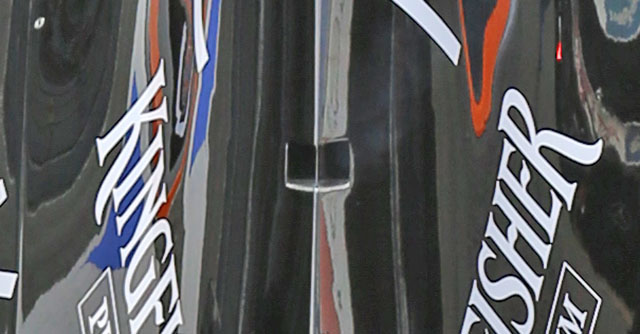
On the engine cover the VJM08 features a small Ferrari or Mercedes style turbo cooling slot.
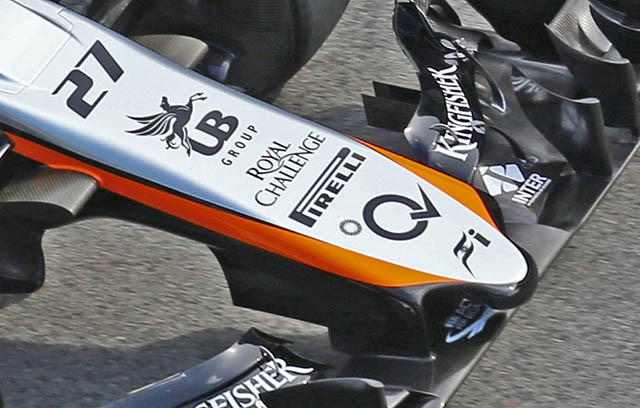
The nose is one of the longer designs, also used by Sauber and Ferrari, it is thought that this style of nose is easier to get through the crash tests compared to the shorter noses seen on cars like the Mercedes. With Force India rushing to get the car ready for the final test it is likely that this nose will be replaced at some point with an improved, and likely shorter, design.
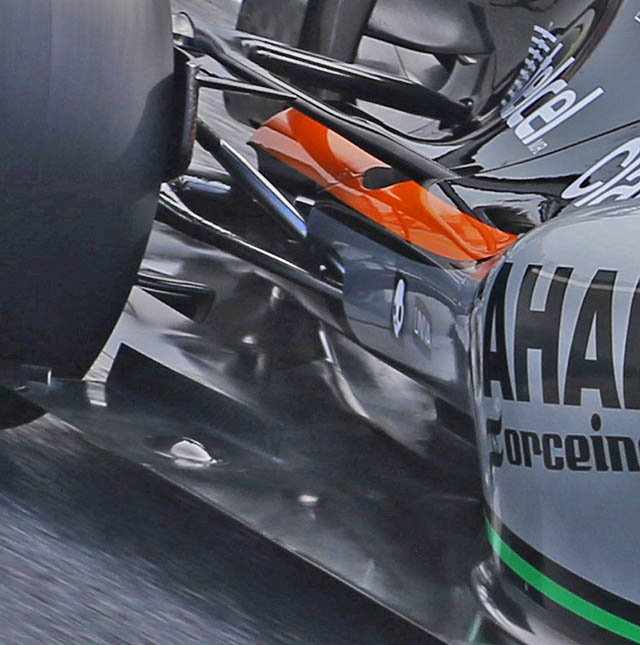
Around the rear of the car much attention has been paid to airflow over the rear floor, and the transmission appears to have been raised somewhat. Note the sculpting on the rear deck.

The winglet at the rear of the car around the exhaust exit is of some interest, mounter above the rear impact structure it features a biplane arrangement with wings both above and below, both clearly influencing the exhaust plume. Compared to other power units and exhaust layouts this suggests that the Force India-Mercedes exhaust exit is higher than the Renault for example which exits on the top of the rear crash structure.
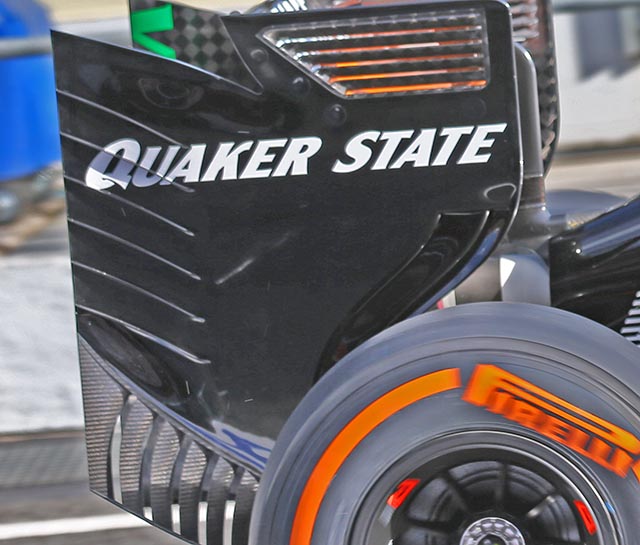
The rear wing endplate features strakes, as seen on most cars in 2015. Generally the rear wing is a carry over from the VJM07. It is a area of major potential development.

The side pod undercut in the VJM08 (above) is much tighter than that of the VJM07 this is likely due to optimisation work by the Force India team on its cooling layout as well as work by Mercedes HPP on the power unit.
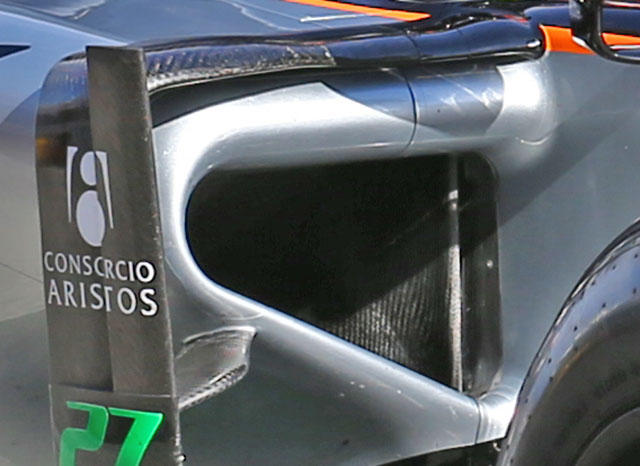
The side pod mounted turning vane runs very tightly with the upper leading edge of the side pod itself, its lower mounting is interesting as it does not appear to go all the way to the floor instead it pick up on a small barge board on the floors edge. The inner and larger barge board features Lotus style slats along its upper edge. One wonders about the impact of the floors rather blade like leading edge on a rivals Pirelli tyres.


